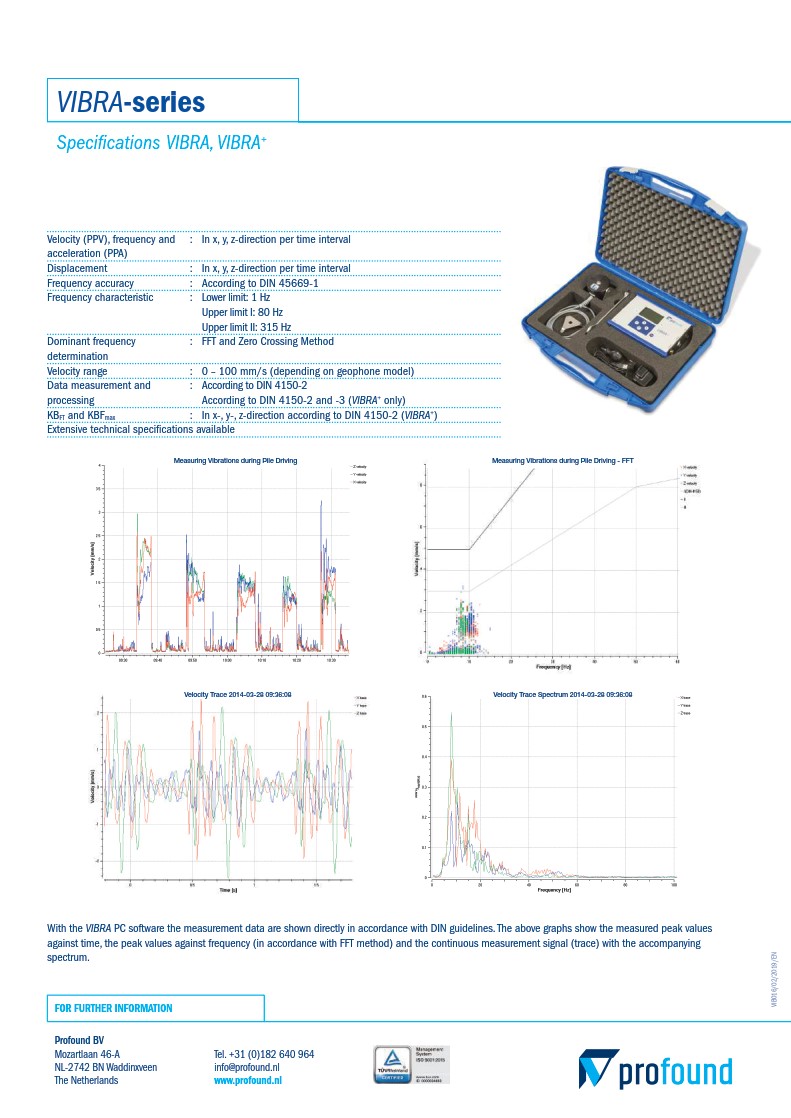During any kind of demolition and earthworks, vibrations cannot be completely avoided. Falling or rebounding demolition parts transmit vibrations via the building ground to the foundations of neighbouring buildings. Vibrations can also be triggered during dynamic soil compaction work with heavy construction equipment and vehicles, for example in the case of deep foundations within soils of lower bearing capacity.
Vibrations are mechanical oscillations of solid bodies which, depending on their strength and place of emission, can cause damage or annoyance. These generally include:
- Impacts on humans and animals in buildings,
- Impacts on structural installations,
- Impacts on the subsoil beneath structures,
- Effects on technical equipment.
The specifications of DIN 45669-2, June 2005, Measurement of vibration immissions - Part 2: Measurement methods and the specifications and reference values from DIN 4150-3, December 2016, Vibrations in buildings - Part 3: Effects on structures provide an evaluative framework.
Relevant for the assessment are the vibration velocities, measured in [mm/s] and vibration frequencies in [Hz]. The DIN 4150-3 provides tabular reference values for these two quantities for different building types (categories) and components (foundation area, uppermost ceilings). Unacceptable vibration effects on the surroundings can be assigned to the causers and, if necessary, to other sources by means of metrological recordings during construction. After analysing the data in the context of the construction process, if necessary the construction diary, the data is usually presented by date and time.
If the vibration loads during the construction period are below the DIN reference values, the results can be used to avert unjustified claims.
Measuring principle
The vibrations are recorded by geophones in the three perpendicular spatial axes (X, Y and Z). The geophones have vials for setting the position in space and markings for the X and Y measurement axes; the Z axis is the vertical. Wall mounting is possible or stable mounting feet are used. A handy portable computer contains data logger and interfaces and is connected to the geophone. The computer is adapted to the general conditions according to the desired or necessary specifications. For example, the measuring interval and duration of the measurements are programmed manually or via software and the device is put into operation on site. Limit and alarm values can be specified, which can be sent wirelessly as SMS or by e-mail to programmed recipients.
A well-known manufacturer is the company Profound from the Netherlands. It supplies a series of devices called VIBRA or VIBRA+.
Prof. Burmeier Ingenieurgesellschaft mbH carries out vibration measurements as part of evidence preservation procedures and thus helps to prevent damage to buildings caused by construction work.


